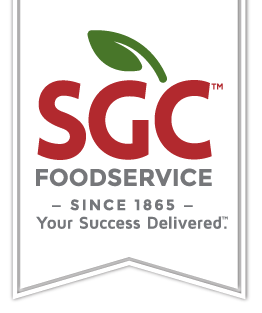Food festivals have become increasingly popular in recent years, attracting food enthusiasts from all walks of life. For restaurant owners and chefs, participating in these festivals presents a unique opportunity to showcase their culinary creations, gain exposure, and attract new customers. However, navigating food festivals requires careful planning and execution to ensure a successful and rewarding experience. In this blog post, we will guide you through the process of navigating food festivals for your restaurant, from researching and selecting the right events to maximizing your booth's impact, managing operations, and building valuable connections. Whether you're a seasoned participant or a first-time attendee, these tips and strategies will help you make the most out of your food festival experience.
Researching and Selecting the Right Food Festivals. Before diving into food festival participation, it's crucial to conduct thorough research and select events that align with your restaurant's cuisine, concept, and target audience. Start by exploring festivals in your region or those known for attracting a significant number of attendees. Consider factors such as the festival's reputation, previous participants, attendance numbers, and demographic information. Evaluate how well the festival's theme and atmosphere align with your restaurant's brand and offerings. Additionally, take into account practical considerations like booth costs, location, dates, and event duration. By selecting the right food festivals, you increase your chances of connecting with the right audience and reaping the benefits they offer.
Preparing for a Food Festival: Strategy and Planning. Once you've chosen the food festivals you wish to participate in, it's time to develop a solid strategy and plan. Start by defining your goals and objectives for joining the festivals. Are you aiming to generate revenue, increase brand awareness, or launch new menu items? This clarity will guide your decision-making process throughout the planning phase. Next, create a standout menu or signature dish that represents your restaurant's identity and is sure to impress festival-goers. Consider offering smaller, sample-sized portions to allow attendees to experience a variety of your offerings. These food festivals can be a good place to try out new potential menu items to see how the customers respond. This can be a common trend for restaurants to do as it is a way to know more before the food hits the menu.
Determine your booth setup, equipment, and staffing requirements well in advance. Ensure that you have all the necessary permits and licenses to operate at the festival. Plan your marketing and promotional activities, such as designing eye-catching signage, utilizing social media platforms, and collaborating with festival organizers for additional exposure. Developing a detailed checklist and timeline will help keep you organized and on track.
Booth Design and Presentation: Making a Memorable Impression. Your booth's design and presentation play a crucial role in attracting festival-goers and making a lasting impression. Create an eye-catching booth that reflects your restaurant's brand and stands out amidst the sea of competitors. Use attractive displays, banners, and signage to convey your message and draw people in. Incorporate your restaurant's colors, logo, and branding materials to reinforce your identity.
In addition to visual appeal, consider adding interactive elements to engage people as they walk by. Offering samples, live cooking demonstrations, or engaging with attendees through contests or games can create a memorable experience and generate buzz around your booth. Ensure that your booth is well-staffed with knowledgeable and friendly team members who can answer questions, make recommendations, and provide exceptional customer service. Even having a speaker where you can talk louder to the people coming to the booth and/or having light music, this can go well with your audience too. Giveaways are also an option as it gives the guests the opportunity to fill out their information to learn more about your business in return to potentially win some full-sized items or experience. A way to collect information from your guests can be by using QR codes as they are easily scannable. As people come by your booth, they can scan a QR code and find more in detail of your restaurant as well as filling out their personal information to potentially win a giveaway or receive rewards.
Managing Operations and Logistics During the Festival. Efficiently managing your operations and logistics during the food festival is essential for a successful experience. Proper food safety practices should be followed, including ensuring adequate refrigeration and storage for perishable items. Minimize waste by preparing food in batches and replenishing supplies as needed. When setting up your booth, you will let the event manager know the type of electrical to help run your booth and they will work with you to make things run smoothly. Optimize your workflow by arranging your booth in a way that allows for smooth movement and minimizes congestion. Clearly define roles and responsibilities among your festival team members to maintain efficiency and ensure everyone knows their tasks.
Presenting your restaurant at a food festival is a great way to get the word out to more people in the community. Participating every once in a while, in shows and festivals will allow the restaurant to be engaged and staff can learn new things from the visitors and the event itself. Keeping the information above handy, will help when planning to be in a festival and what to expect.

_91rx0bys.jpg)